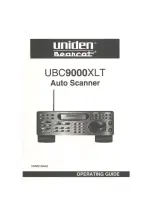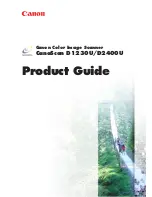
Scanning Steps
Tips for use
step instructions
calibration
Scan mode selection
Scanning Preview
Camera brightness adjustment
Withdraw useless data
point cloud preprocessing
Adjustment of the light fill system
Human Hair Human Body Colorful Item Free Setting
Color Setting
Splice
Resolution
①
Calibration
:when using the software at first times, it must be calibrated and then
scanned.The calibration is to calibrate the camera parameters Situations requiring
calibration: after software installation; not calibrated for a long time; scanner has been
shaken/transported; single frame scan data is low/no data; scan stitching is
stuttering;marker recognition is low/unrec ognizable.
Scanning mechanism:
the common field view of the two black and white cameras is
for coordinate information (scan the point cloud),and the common field view of the all
camera is for color information (scan the color texture).For example, when Scan
two-sided objects (such as chin and neck), the scanner needs to be turned sideways.
Scanning Techniques:
during the scanning , if a single sweep, the image will be dark
or the edge will be too noisy, so we need to scan smoothly and change the scanner
angle .About 400mm scanning distance is bast (high definition mapping, smooth
surface quality of the model, low noise).For example, face scan, and fine scan (≤
0.5mm).For easy to splice , you can scan as close as possible, so that data will better;
for difficult to splice parts (few features), you can scan from a distance.
stitching retrieval:
when a splice is lost, move the scanner back to the scanned area
and stay there for 2-5s (the red box is the missing splice frame, and it is easier to
retrieve by pointing at this frame). If not recovered, pause the start of the scan by
aiming at the previously scanned area.
Improve splicing accuracy:
scanning path needs to be closed loop (multiple scanning
angles are needed at the overlap). When scanning medium and large items (such as
sculptures, full-body portraits), the scanning is spread from the center to all around.
Note: Do not make the closed loop too long, or stitching accuracy can not be
guaranteed; scanning plane items , after scanning from the center to both sides, you
can rotate the scanner angle horizontally, to carry out multi-angle complementary
scanning to ensure the accuracy of the feature/texture stitching.
Portrait/body part scanning:
a. When scanning portraits, select the Human Hair / Human Body mode for scanning.
b.Upright/shaggy/discrete/curly hair is difficult to scan (try dampening it or using
hairspray, making it lumpy ), while straight/thick/unclipped hair is easy to scan.
c.During the scanning, the human body should be keep stay and not deformed,
otherwise it is easy to scan the wrong layer / not spliced (the surface of the scan data is
not smooth).If the skirt or tulle is fluttering, avoid scanning as much as possible; please
keep the people around you quiet.
d.Small reflective objects such as glasses, watches, jewelry, ornaments, etc., which are
difficult to scan properly, should be removed or covered.
e.When scanning portraits, try to avoid multiple scans for areas that are prone to
change. When scanning specific arms/legs, for example, the angle of the shape can be
changed, so it is necessary to complete the scan in one time.
f.In areas with fewer features, you need to use large features to stitch together. when
scanning the hair, due to the small amount of hair out of the point, try to scan the
forehead, shoulders, back, scan and stitch the hair together.
h.Try to scan transitions through large areas that are feature-rich areas.
g.moderately fast:Too long a scan can lead to an increase in body shaking, increasing
the wrong layer, which needs to be scan steadily and quickly.
Summary
: scanning paths for full-body : chest and abdomen - side face (including
ears) - front face - chin - chest and abdomen - left/right front leg - abdomen - another
leg - abdomen - waist - abdomen - waist (one closed loop) - back - abdomen - left/right
back leg - waist - another leg - back - neck - head (sweep hair as much as possible) -
chest and abdomen (end).
④
Resolution
:0.2-3.0mm; high resolution, larger data size, not only longer processing
time, but also the needs Large memory capacity for the computer. It is recommended
that the maximum size of a single scanned item does not exceed 2m.
③
Splice
:by Marker Point , by Feature , by Texture , and by Mix . by Mix : When an object
has only partial features or Texture variation (e.g. sofa, seat, etc.),Will need marker
points at no feature or texture area,.During scanning, scannner will identify markers,
textures and features on the point cloud data, and then automatically switch to
corresponding scan mode, ensuring the scanning of the whole item with minimum
markers.
②
Color Setting
:monochrome untextured, colored textures.
⑤
Scanning Preview
:click start on software to start preview scanning, to know the
scanning distance (the best scanning distance is 200mm). before scanning, adjust the
brightness of black and white camera to increase the data, based on the color of item.
adjust the brightness of the color camera to adjust the color brightness of the data.
fter stopping the preview, start the first frame scanning.
⑥
Start scanning
:point the scanner at the object with enough maker point , feature ,
texture and click button on the hardware to start scan. of the first scan data is few or
the scanner is not aligned, it may result in stitching failure, we need to build a new scan
project, start again.
⑧
point cloud preprocessing
:after processing, it is easy to see the scanned data . In
color scan mode, to hidden color texture is more helpful to check data.If the point
cloud still has overlays, try clicking this button again to see if the overlays can be
removed.If not, you can try to repeat the scan in the area and around the overlay (the
wrong layer sometimes need to rotate 360 ° scan in the wrong position to repair),click
on the "End Scan" will delete some of the wrong layer.After the scanning, you can
select the face of the human body, and then click "point cloud pre-processing", you can
optimize the details of the face, the details will be better.
⑦
Adjustment of the light fill system
:before scanning , select the fill light system
on/off. When do the scanning , cannot change the fill light system option. Turning on
the fill light system improves the recognition of marker points and features, so when do
the scanning please turn on fill light system.
⑨
End Scan
:pac kage, stitching, de-layering, and other processing of all point cloud
data acquired. After the processing is complete, the data can be deleted, encapsulated,
and other operations. After clicking "End Scan", you can't continue scanning.
Start scanning
Pause scanning
End Scan
package
save
①
②
③
④
⑤
⑥
point cloud edito
(isolation point/disconnecting
components、Delete Stack)
non-color models are recommend saved in .stl
Color models are recommend saved in .obj
Point cloud data saved in .asc or .ply
Point cloud wrapping creates triangular mesh
Editing, deleting, adjusting color of the mesh
Brightness and contrast of color model
Know the optimal scanning distance
⑦
⑨
⑧



















